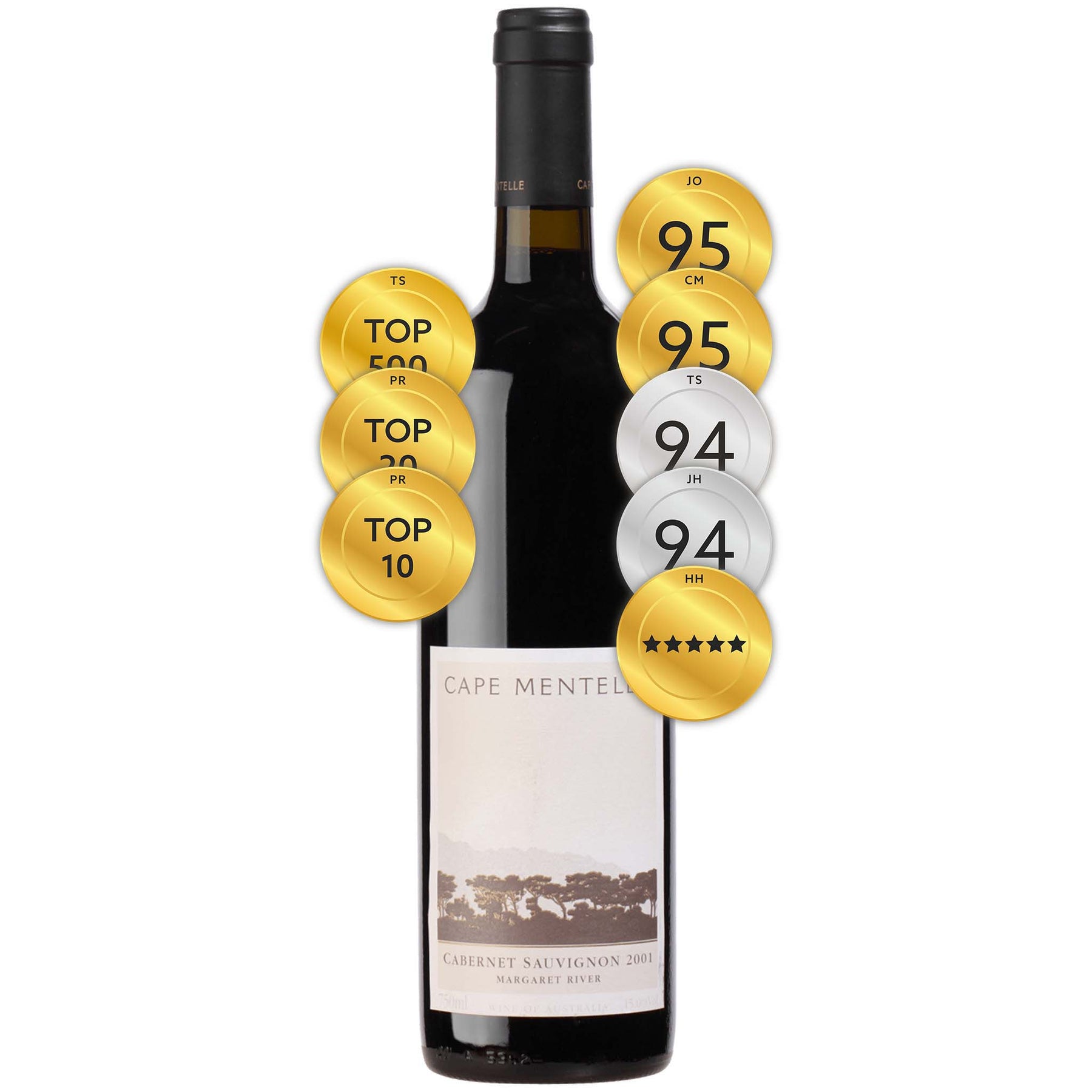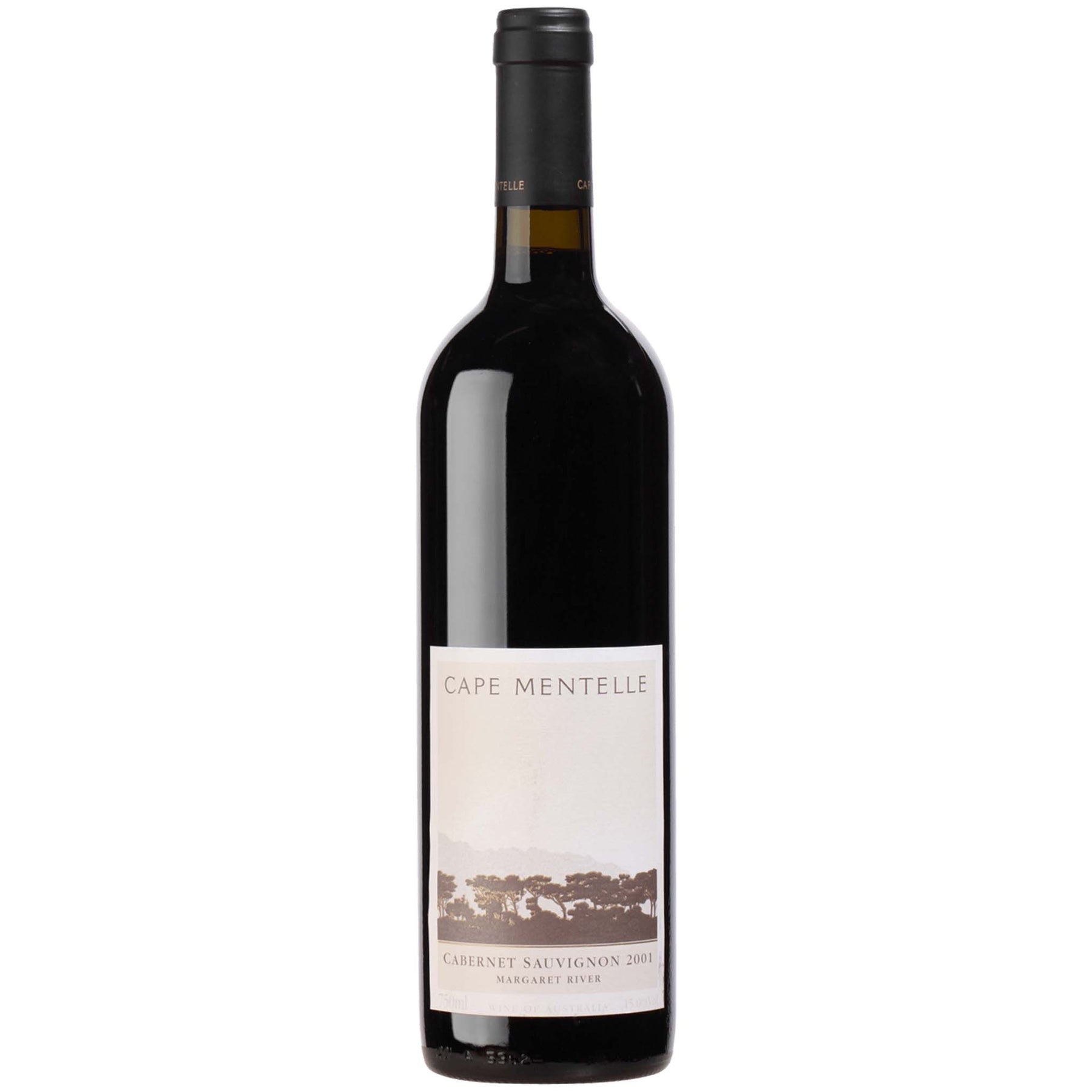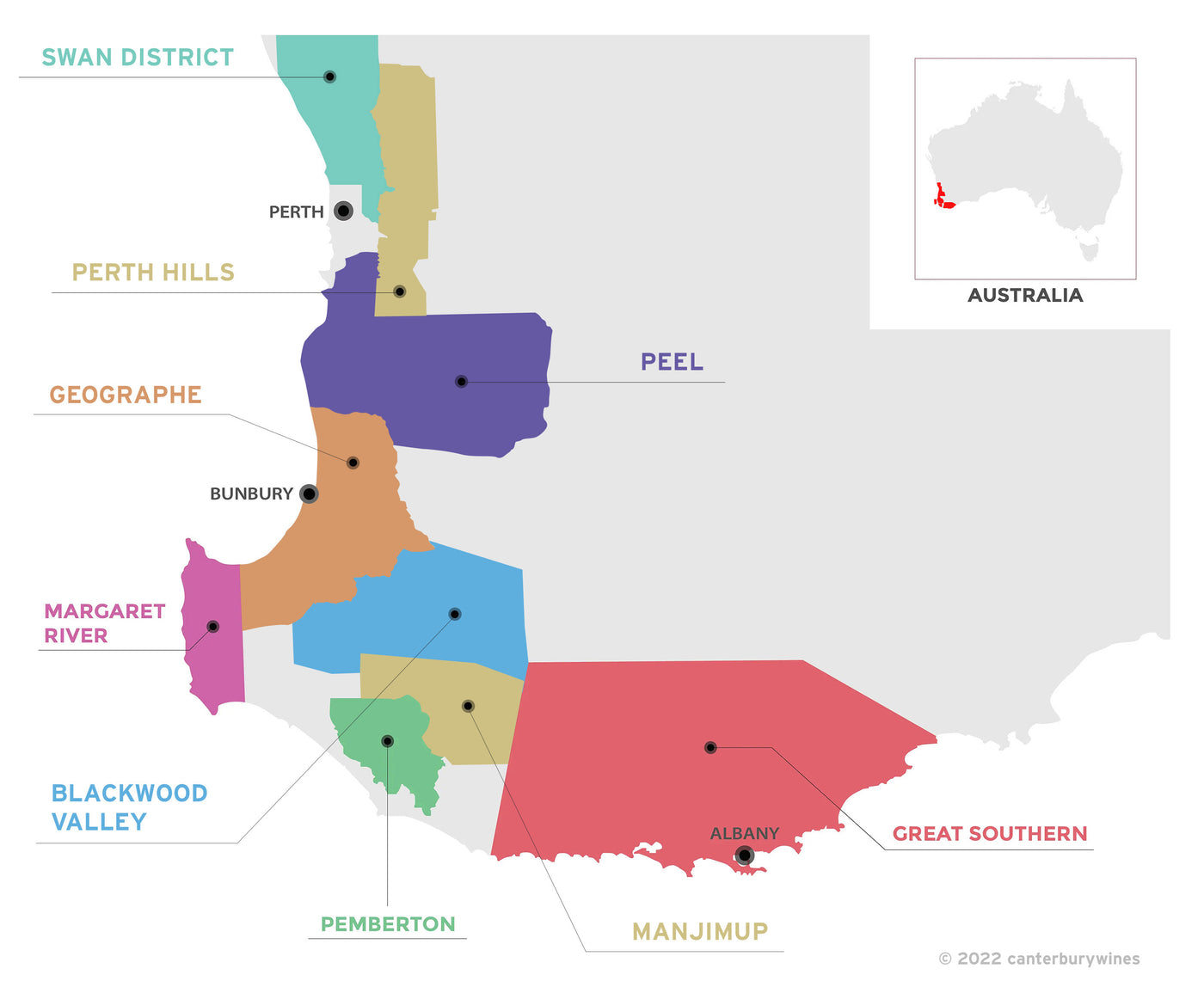

Cape Mentelle Cabernet Sauvignon 2001
Style: Red Wine
Closure: Cork
Cape Mentelle Cabernet Sauvignon 2001
Warehouse
34 Redland Drive
Vermont VIC 3133
Australia
Critic Score: 95 and ★★★★★
Alcohol: 15.0%
Size: 750 ml
Drink by: 2025
Philip Rich's Top 20 wines of 2005
Philip Rich Top 10 Wines of the Past Decade
Tyson Stelzer's Top 500 Wines of 2005-2006
Wine industry pioneer David Hohnen established Cape Mentelle Vineyards in 1970. The 16ha Wallcliffe Vineyard was planted in the early 1970s and the winery's flagship Cabernet Sauvignon is sourced primarily from this Vineyard.
"Immensely powerful and complex cabernet. Its richness, perfectly handled and integrated oak, and supple, fine-grained and persistent tannins provide the structure for this wine to become even softer and more complex over the next 10 to 15 years – and makes it one of my favourite wines of 2005." Philip Rich
Expert reviews
"This is a wonderful return to form for one of Margaret River's most illustrious names. Very deep in colour, this immensely powerful and complex cabernet has aromas of blackcurrant, licorice, cedar and olive tapenade; while the palate confirms how good this wine is. Its richness, perfectly handled and integrated oak, and supple, fine-grained and persistent tannins provide the structure for this wine to become even softer and more complex over the next 10 to 15 years – and makes it one of my favourite wines of 2005." Philip Rich, Australian Financial Review - Top 20 Wines of 2005
"This is a real cabernet. It's not opulent, it's not over-ripe, it's not shiraz, and nor was it meant to be. It's fine and gravelly and strong in its aroma, there is nothing fragile here, and then the palate impales the initial impression and does not let it go anywhere: currants, yes, but moreso ash and cedar and gravel and bitterness, with dry dark chocolate appearing but only as stumps to the house of its stylish, long flavoured, anti-sweet, rakingly tannic body. In 12 to 15 years time, this wine will not only say something grand about Margaret River cabernet, but will match food like all-too-few others. Drink: 2015-2025." Campbell Mattinson, Winefront Monthly - 95 points
"From an exceptional vintage and weighing in with 15 percent alcohol, this is one of the biggest Mentelle cabs ever made. It's a wine of great power and concentration, which pushes alcohol to the limit but manages to preserve its varietal and regional integrity. Herbal, crushed-leaf and mint regional characters come with blackcurrant, linseed, toast and black olive flavours. It's a powerhouse, with a great deal of fruit sweetness, flesh and classic, firm Margaret River tannins bringing up the rear." Huon Hooke, Australian Gourmet Traveller Wine ★★★★★
"Cape Mentelle's return to prominence with cabernet sauvignon continues with this alluringly complex and tightly crafted long-term wine. Its dusty, cigarboxy bouquet of cassis and dark plums, dark olives and cedar/vanilla oak reveals meaty undertones and aromatic floral qualities. Smooth and silky, it's firm and fine-grained; a structured wine whose slightly closed and brooding core of blackberries, cassis and plums is tightly interwoven with tannin and oak. Drink 2013-2021+" Jeremy Oliver – 95 points
"The best Cape Mentelle cabernet for years is incredibly fine and elegant yet incredibly powerful and robust at the same time: it has utterly pristine regional/varietal flavours of tiny blackcurrants and eucalypt as well as massive, tongue-hugging tannin and extraordinary length. Wow." Max Allen, The Weekend Australian
"From the outstanding 2001 Margaret River vintage, the only thing this wine is lacking is time in the cellar to allow the oak to integrate and the fruit to come forward. This is an outstanding Cape Mentelle Cabernet which will be very long-lived. The bouquet is a concoction of chalky river pebbles, capsicum, dust, tobacco, geranium, bay leaf, tomato bush, coffee and dark chocolate aromas. Intense black currant and red cherry fruit is the driving force behind a beautifully structured palate, supported by fine, grippy, mouth-filling tannins. Excellent length; great wine. Rated identically when retasted on December 9. Best drinking around: 20011-2021." Tyson Stelzer, Top 500 Wines 2005-2006 – 94 points
"Rich, gently savoury blackcurrant, earth and dark chocolate; medium to full-bodied; excellent tannin structure, good oak. No brett; lovely wine." James Halliday, Halliday Wine Companion - 94 points
"This is one of the best Cape Mentelle cabernets I've tasted in a long time – everything's right here. First, there's a hint of mint and lavender on the nose before a heady aroma of mixed berries, cassis, vanilla, dark chocolate and tobacco kicks in. It's very juicy, luscious and palate filling with the oak complementing not dominating and firm tannins to close. Still a bit closed, this wine needs time to develop, so be patient, for a year or two at least." Jane Faulkner – The Age Good Life
Awards
Philip Rich's Top 20 wines of 2005
Top 10 Wines of the Past Decade - Philip Rich, Australian Financial Review
Tyson Stelzer's Top 500 Wines of 2005-2006
About the vineyards

Cape Mentelle has over 150 hectares of its own vines across four vineyards within the Margaret River region. Primary plantings are cabernet sauvignon, semillon and sauvignon blanc, with smaller amounts of shiraz, chardonnay, merlot, cabernet franc and zinfandel.
Wallcliffe Vineyard
Cape Mentelle's journey started in the early 1970s with planting of the 16ha Wallcliffe Vineyard. Varieties planted at Wallcliffe are sauvignon blanc, semillon, cabernet sauvignon, cabernet franc, zinfandel and shiraz, and these vines have provided source material for new blocks as the vineyard has expanded. The winery's flagship Cabernet Sauvignon is sourced primarily from the original Wallcliffe Vineyard. The three cabernet sauvignon blocks are cane pruned. Row spacing is mostly 3m, with 1.5 to 1.8m vine spacing with predominantly vertical shoot positioning trellising.
Trinders Vineyard
Evolving from the success of the Wallcliffe Vineyard, Trinders was developed on the eastern side of the Estate entry road in 1988 when Cape Mentelle purchased the 23ha site. Plantings are of semillon, sauvignon blanc, cabernet sauvignon, cabernet franc, merlot and shiraz. This block has been the testing ground for many early 'alternative' methods, including making and incorporating compost for vine nutrition, undervine weeding and minimal chemical use for pest and disease control. Numerous trellis systems have been tried in the past. Vertical shoot positioning is now used in most of the vineyard to facilitate ripening by keeping the canopies upright and ensuring even sun exposure.
Chapman Brook Vineyard
Chapman Brook boasts some of the best growing sites in the region. The undulating slopes help to create wines of uncompromised freshness. The 40ha Chapman Brook Vineyard is located 20 km southeast of the Margaret River township with a predominantly easterly aspect and some southeast and northeast slopes. Varying depths of sandy loam topsoil overlie ironstone gravel with varying degrees of heavy clay subsoil. This vineyard was planted in the early 1990s, mostly to white varieties - sauvignon blanc, semillon, chardonnay and viognier. The GinGin chardonnay clone is planted here along with some newer clones (5, 76 and 95) of the main varieties. Vertical shoot positioning is used throughout this challenging vineyard with 2m vine spacing and row spacing and unilateral cordons.
Crossroads Vineyard
Crossroads Vineyard is the youngest site, but also one of the strongest performers. Planted in 2003, its ancient lateritic soils are home to sauvignon blanc, semillon, and chardonnay, as well as shiraz and small amounts of petit verdot, zinfandel and grenache.
About the winery

David Hohnen
Wine industry pioneer David Hohnen and his brothers Mark and Giles established Cape Mentelle Vineyards in 1970. The winery takes its name from the nearby Cape, named after two notable French scientists, geographer Edmund Mentelle and his cartographer brother Francois-Simon, who charted the coast of Western Australia in 1801.
Cape Mentelle's journey started in the early 1970s with the planting of the 16ha Wallcliffe Vineyard. Varieties planted at Wallcliffe are sauvignon blanc, semillon, cabernet sauvignon, cabernet franc, zinfandel and shiraz, and these vines have provided source material for new blocks as the vineyard has expanded. The winery's flagship Cabernet Sauvignon is sourced primarily from the original Wallcliffe Vineyard.
In 1983 Cape Mentelle won the coveted Jimmy Watson Memorial Award for the best one-year-old dry red wine, and cemented its position as a premium winery with another win in 1984. Their Cabernet Sauvignon is widely regarded as one of Australia's leading cabernets.
Another wine to become a core part of the winery's portfolio was the distinctive Zinfandel. David Hohnen had studied wine at Fresno State University in California and was captivated by this robust variety. The 1972 plantings at Cape Mentelle were one of the first commercial vineyards of the variety in Western Australia.
The area under vine increased with the establishment of the 23ha Trinders Vineyard in 1988, followed by the Chapman Brook Vineyard in the early 1990s. By this time Cape Mentelle had a well-established reputation in the Australian market.
Today, Cape Mentelle is part of Paragon Wine Estates owned by Endeavour Group Limited.

Western Australia
Western Australia is home to more than 400 wineries across nine vast and extraordinary wine regions which are almost entirely concentrated in the south-west and great southern land divisions of the State. The regions are Blackwood Valley, Geographe, Great Southern, Peel, Pemberton, Manjimup, Margaret River and Swan District.
The oldest region is the Swan Valley, the best known both nationally and internationally is Margaret River and the largest is Great Southern. The Great Southern region is further divided into the five subregions of Albany, Denmark, Frankland River, Mount Barker and Porongurup.
The history of wine production in Western Australia dates back to 1840 with the establishment of Sandalford in the Swan Valley region. The recognition of the fine wine possibilities started to be realised after the establishment of the Margaret River Region in 1967, which has become renowned for its high quality Chardonnay and Cabernet Sauvignon. The other regions produce a diverse range of regionally distinct wines, from stunning Rieslings and evocative Shiraz, to a range of unique Cabernet Sauvignon blends.

